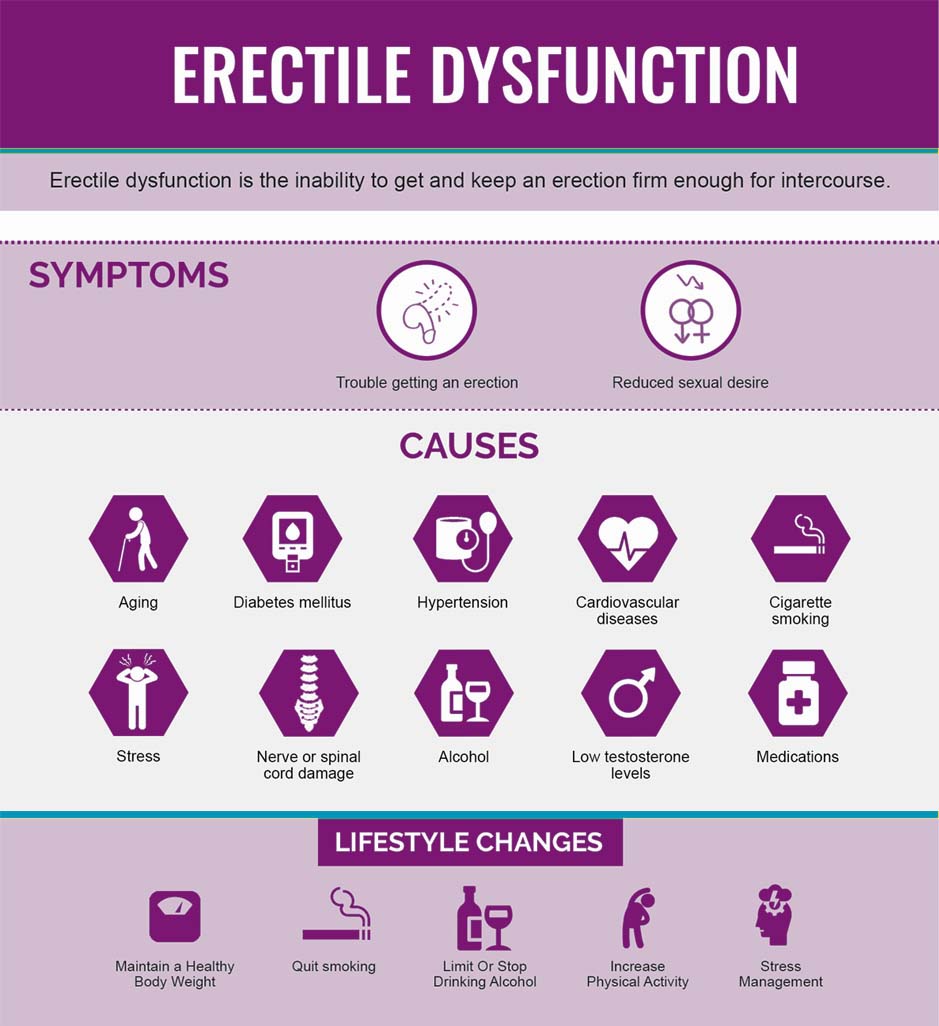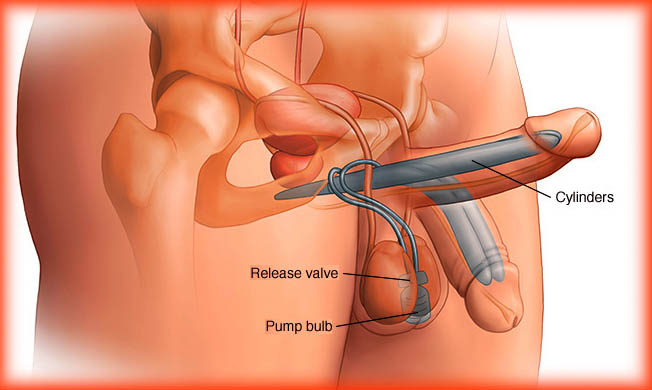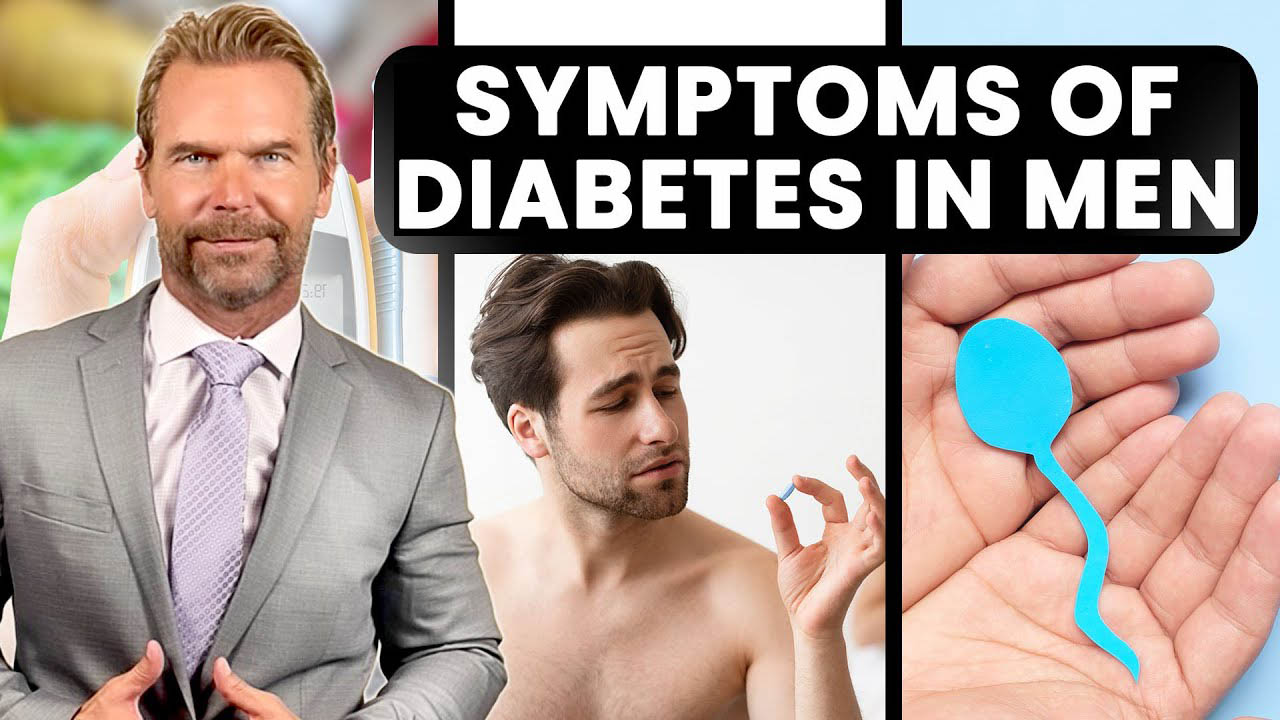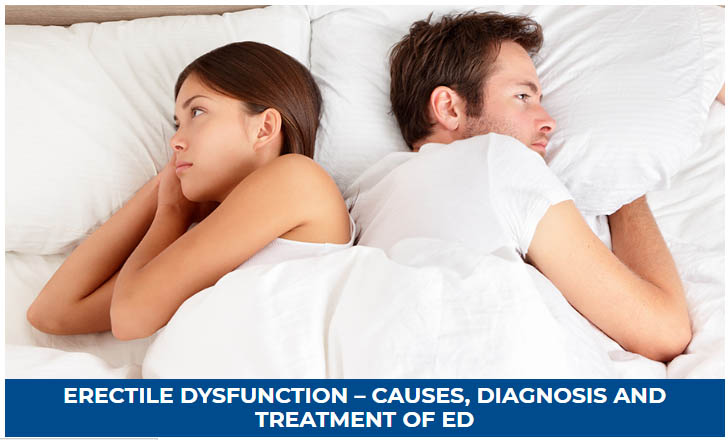Male erectile dysfunction (MED) is a medical term for the consistent inability to generate or maintain an erection long enough for satisfactory sexual intercourse. The problem has long been known as impotence. Chronic erectile dysfunction has a long-term negative effect on sexual performance and emotional well-being.
Many men experience a temporary loss of erection: fatigue, stress and emotional distress can all interfere with maintaining an erection. For over thirty million American men, however, the problem is permanent. The ability to maintain an erection is essential for male sexual performance, and the inability to do so can shatter a man’s self-esteem.
Out of the millions who suffer from impotence, only ten percent consult their doctors about possible treatments. It’s hard for a man to discuss “impotence,” or to admit that he’s having erectile difficulties. This site is all about erectile dysfunction treatments. The information provided here should help men and their partners realize that many possible solutions for impotence exist.
Erectile Dysfunction Treatments
Erection difficulties were once assumed to be psychological in nature, and that guilt, depression, or other emotional disorders affected a man’s sexual performance. While it’s certainly true that emotional distress and mental disorders can cause erectile dysfunction, seventy percent of all erectile dysfunction cases have a physical cause.
Whether the cause of MED is chemical, mental, or physical, when the cause of the problem is treated, then the ability to achieve an erection may return or be improved. Erectile dysfunction treatments are remarkably varied: treatment may be as simple as changing existing medication, or as complicated as surgical correction. Other times, sexual therapy may be involved Other than these, there are erectile dysfunction pills treatments. A wide range of medicinal treatments is available, and alternative medicine also offers possible solutions. Erection aids can help improve a man’s ability to function sexually. Although such aids will not actually treat erection difficulties, they can help a man reclaim his sexual life. Treatment for MED may involve treating the condition, such as testosterone deficiency, causing it.
This site provides basic information on available impotence treatments, but may not cover every existing treatment. The information contained is intended only for personal information: treatment should be pursued under the care and monitoring of a qualified medical professional. Please remember that erection loss can indicate a number of potentially serious physical conditions, including heart disease and diabetes, so the advice of a doctor or other health professional is essential.
Erection Aids: Vacuum Pumps and Penile Injections
Erection aids can help men deal with impotence issues. Aids are not treatments: they will not cure impotence, or treat underlying physical or psychological causes. They can, however, be used to make sexual intercourse possible in spite of erectile dysfunction. These aids range from non-invasive vacuum pumps to the effective, if somewhat intimidating, penile injection. Not every aid is appropriate for every man: you may need to experiment to find a solution that works for you.
Penile Injections: Papaverine Hydrochloride and Phentolamine
Erections can be achieved by injecting medication directly into the corpora cavernosa (the two chambers that run down the length of the penis and which trap the blood necessary for erections). Penile injections work in as little time as five to fifteen minutes, and the erection may last as long as an hour.
Medications used for penile injections include papaverine hydrochloride and phentolamine. Papaverine hydrochloride causes the muscles of the corpora cavenosa to relax, allowing blood to flow into the penis with greater ease. Phentolamine blocks signals from nerves that cause the penile arteries to contract, which forces blood out of the penis. Often the two medications are combined for greater effect.
Injections should not be used more than ten times in a month, equally spaced. When administering the injection, the man should alternate which side of the penis he uses. Frequent injections can lead to scarring around the injection site.
Priapism is the medical term for an erection that doesn’t subside, and is a possible side effect of using penile injections. Priapism can last for over eight hours and requires immediate medical attention. Fortunately, priapism responds well to medical treatment.
Penis Rings
Penis rings are perhaps the oldest type of erection aid. The device is simply a ring, often made of plastic or rubber, that fits around the base of the penis after achieving erection. The ring prevents the blood that is stored in the corpora cavernosa from leaking out of the penis during intercourse. The rings work best for men who can achieve erections but who have difficulty maintaining them for intercourse.
Vacuum Pumps
Vacuum pumps are among the most commonly used erection aids, and are often effective. A vacuum pump has a plastic container that fits over the penis. The container is connected to a pump that creates a partial vacuum in the container. This results in blood rushing into the penis, and erection.
A vacuum pump may come with an elastic band that is placed around the base of the penis after achieving erection. The band, similar to a penis ring, prevents blood from leaking back out and reducing the erection.
A vacuum pump has few, if any adverse side effects. A variation on the more common pumps includes a rubber sheath that stays on the penis during intercourse and provides extra support.
Intraurethral Suppositories and Prostaglandin E1
Intraurethral suppositories can cause erections in as little as ten minutes. The medication, usually alphrostadil (a synthetic version of prostaglandin E1) is administered using an applicator. The medication is inserted into the tip of the urethra, at the head of the penis. Erections generally last between thirty minutes to an hour.
Prostaglandin E1 is a powerful vasodilator, which relaxes the penile arteries and promotes blood flow. Prostaglandins are a family of hormone-like substances that perform a variety of chemical functions in the body. Although the term prostaglandins implies a connection to the prostate, only prostaglandin E1 directly affects sexual activity.
Use of prostaglandins should be monitored by a health professional. Side effects can include testicular and penile pain, a burning sensation in the urethra, dizziness and possible urethral bleeding and spotting. Men suffering from blood clotting disorders or those on blood thinners should not use protaglandins.
Surgical Treatments: Penis Implants and Other Options
Surgery is considered a last resort for erectile dysfunction. While surgery helps some men achieve erections, the male anatomy is complex, and any surgery or trauma to the genitals can result in nerve damage, which may worsen erectile dysfunction. If medication or therapy fails, or if physical abnormalities cause the impotence, then surgery becomes a possibility.
Penile Prosthesis
Of the various surgical procedures available, Penile implant surgery in India has the best chance of relieving impotence. Mechanical devices are inserted directly into the penis. Side effects may include implant breakdown, although current implants are usually quite reliable. Infection is a more serious concern, and may require the immediate removal of the device.
Two distinct types of implants, or prostheses, are available. Flexible twin rods are inserted into the corpora cavernosa, the two spongy chambers that run the length of the penis and trap the blood necessary for erections. The man may then manipulate his penis into the position he needs. This type of surgery leaves the penis with a somewhat unnatural appearance. It does nothing to increase the length or width of the penis, but sexual intercourse is possible.
Inflatable prostheses are more complicated and carry a higher risk of mechanical malfunction. However, the penis looks more natural, and some increase in size is possible. Instead of rods, two inflatable cylinders are inserted. These cylinders are connected by tubes to a fluid container and a small pump, both of which are also surgically implanted. By manipulating the pump, the man forces the fluid into the penile canisters, creating an erection.
Some men have trouble accepting the changes to the male anatomy that accompany implants. The pump for the inflatable model, for example, is inserted under the skin of the scrotum. Some men’s sexual partners also have a difficult time accepting physical changes caused by implants. A health professional should discuss all the advantages and disadvantages with both partners before starting on this course.
Vascular Surgery
Problems with penile blood flow can also be corrected with surgery. However, the science of vascular penis surgery is only in the early stages of development, and only a small percentage of men benefit from the procedure. The risks of potential nerve damage caused by the surgery must also be considered.
Surgical artery repair can remove obstructions that prevent proper blood flow to the penis. The procedure works best when the obstruction is a minor blockage caused by pelvic injury. Young men have the best chances of benefiting from the surgery. Older men, who often have larger, more complicated blockages, experience much lower success rates.
Another form of vascular surgery is performed on the veins that lead out of the penis. The veins are intentionally obstructed, preventing blood from prematurely leaking out and reducing erection time. These artificial obstructions may lose their ability to store blood over time.
Nerve Damage: A Potential Risk
The penis is one of the most complicated areas of the male anatomy. It is a mixture of muscle, spongy tissue, veins, arteries and nerve cells. Even surgery designed to improve erection capability carries the risk of nerve damage or other trauma to the surrounding area. Surgical trauma can cause erectile dysfunction, a consideration that should be discussed with your surgeon before any surgical procedure.
Alternative Erectile Dysfunction Remedies
A number of herbs, amino acids, and supplements are available as erectile dysfunction remedies. A market for such products has always existed, but with the success of Viagra, herbal companies offering some form of ‘natural’ aphrodisiac seem to be springing up everywhere.
Before you consider using alternative ‘natural’ erectile dysfunction remedies, be aware that very few of these products have undergone rigorous scientific examination. Some may even be harmful to your health. Consult with your doctor or other health care professional before trying any alternative product. The following list is meant only for informational purposes. Remember that no firm guidelines exist for the manufacturing or administering of such products.
Damiana: A liquor made from the leaves of the damiana plant has traditionally been used as an aphrodisiac in Mexico. This is the basis for its use as an alternative impotence treatment. No testing has been done on humans.
DHEA: DHEA is a chemical produced by the adrenal glands, and is essential for the production of both testosterone and estrogen. Some believe that increasing DHEA levels may help men with low testosterone. Some minor clinical trials have shown promising results. However, as testosterone levels do not cause most cases of erectile dysfunction, DHEA is of limited use as an impotence fighter.
Ginkgo: While ginkgo is often recommended as an impotence treatment, no hard evidence exists that it has any effect on erectile dysfunction. Ginkgo can affect blood clotting, and people taking prescription blood thinners should avoid taking any supplement containing ginkgo.
Ginseng: Traditionally used asan aphrodisiac in Eastern Countries, ginseng does have certain energy-raising properties. Whether it has a direct effect on impotence or not has yet to be determined.
L Arginine: L arginine is an amino acid that increases the levels of nitric oxide in the bloodstream. Nitrous oxide increases blood flow, which is necessary for an erection. In theory, at least, L arginine should help treat impotence, but little real research has been done. The amino acid is often mixed in supplements with ginseng and ginkgo.
Maca Root: The root of a Peruvian vegetable, maca root has improved erectile function in male lab rats, and seemed to have an effect on the rats’ libido. It has not been tested on humans.
Muira Puama: Muira puama is an extract from a Brazilian bush. The extract has been used as an aphrodisiac in Brazil for many years. Few studies have been conducted on muira puama, and those that have been done did not include placebo test subjects. Any claims that the extract aids in maintaining erections are, therefore, unreliable.







